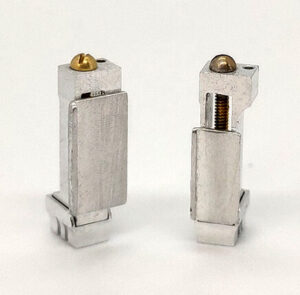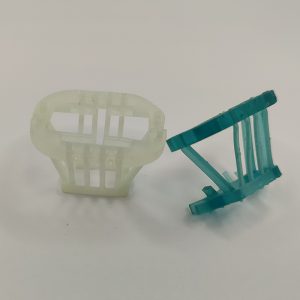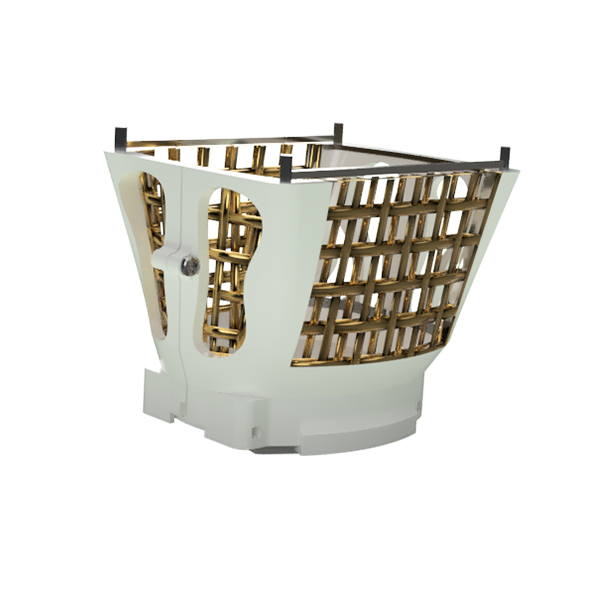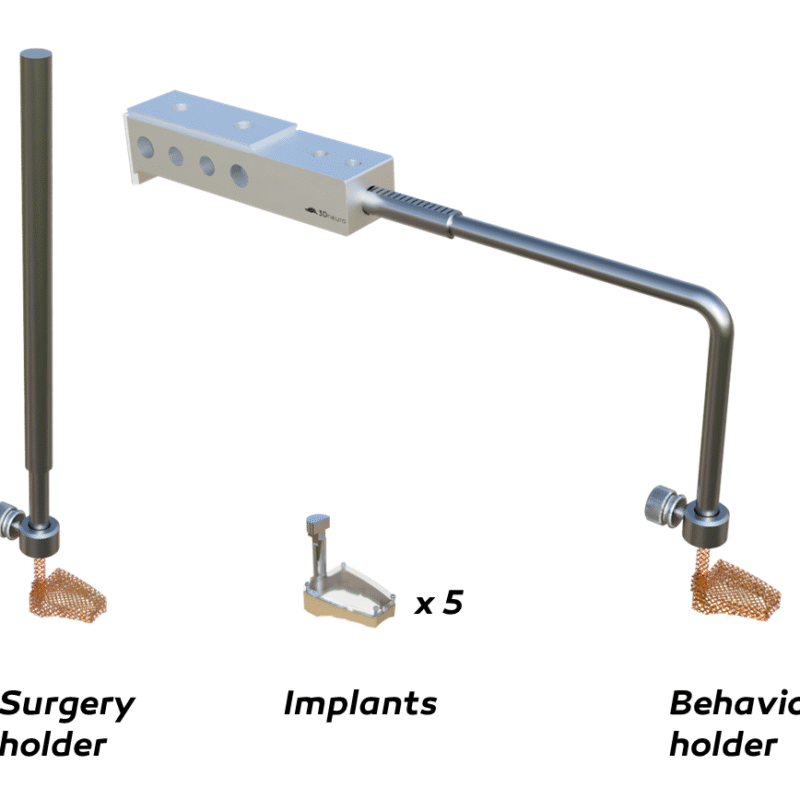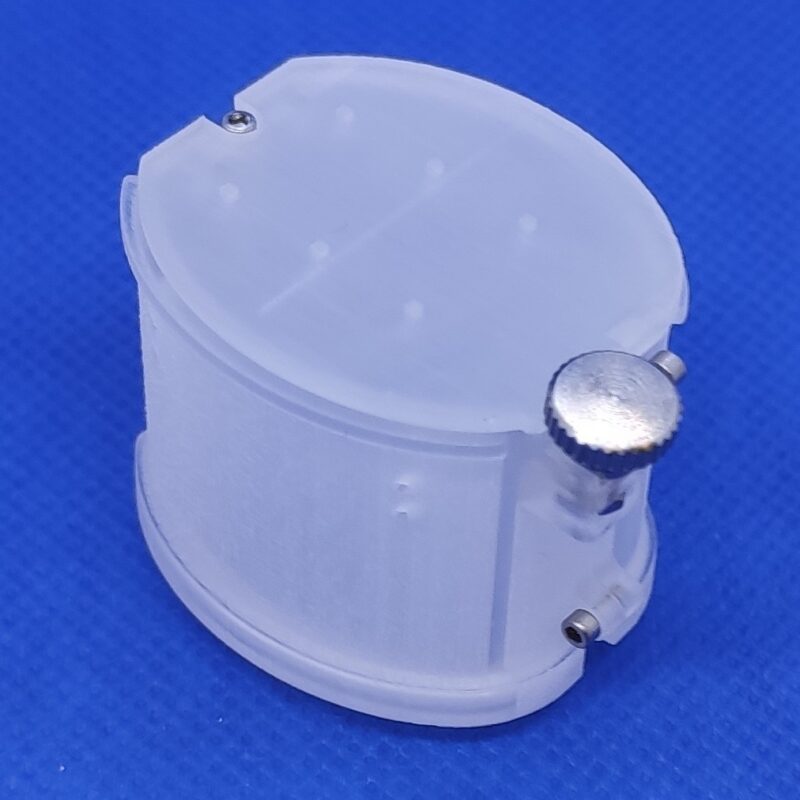The mouse crown is a flexible 3D printed cage that can be used to protect the 3Drive (or other microdrives) for use in freely behaving or head-fixed setups. It serves as a holder for the high-density connector of the probe, protective frame for cementing the implant, and Faraday cage to minimize electrical noise.
The name mouse crown stems from its original purpose. But nothing stops you from also using it on rats or other small animal models.
We have models available that allow head fixation of mice. If you would like to make it compatible with your head fixation system, get in touch for a custom modification.
Components
The crown comes with a 3D printed, flexible, sturdy main body (A), a protective conductive mesh & stencil (B), holding braces to hold thin and thick high-density connectors (e.g., 32 and 64-channel Omnetics) (D), and flex holding braces to flexibly secure EIBs, headstages, or connectors of different sizes (C).



